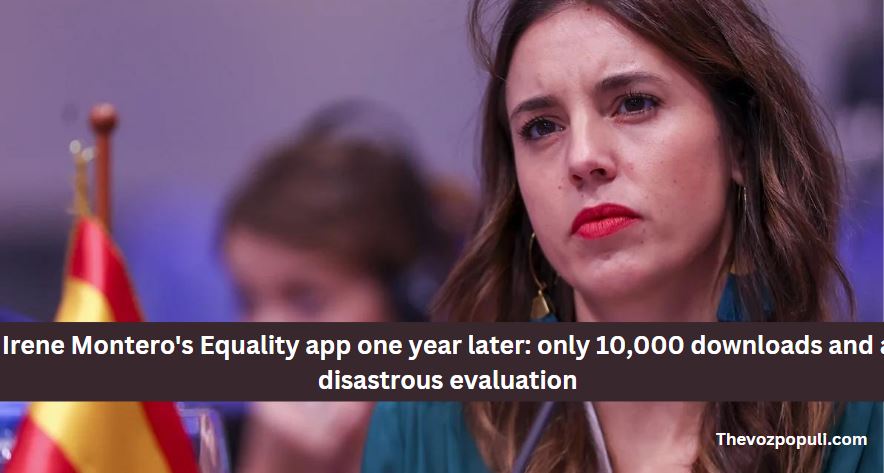One year ago, Irene Montero, Spain’s Minister of Equality, unveiled an ambitious initiative to advance gender equality through digital innovation. The Equality app, launched to bridge gaps in gender parity and promote inclusivity, has since embarked on a transformative journey. Designed to provide resources, support, and educational tools to individuals and communities, the app has positioned itself as a cornerstone of Spain’s broader strategy for gender equality.
In this retrospective, we examine the impact of the Equality app over the past year. We explore its achievements, challenges, and the evolving role it plays in fostering a more equitable society. By analyzing user engagement, policy integration, and feedback from diverse stakeholders, we aim to understand the app’s contribution to advancing gender equality and its potential for future growth and innovation.
Almost a year ago, Irene Montero, then Spain’s Minister for Equality and now a Member of the European Parliament for Podemos, introduced the ‘Me Toca’ app. Designed to track and distribute household chores, the app was launched with the slogan: “Tired of always having to do the housework? Download the Me Toca app, create your work team, and… start sharing!”
The initiative, which cost €211,750, encouraged a fair division of domestic responsibilities. However, despite its ambitious goals, the app has struggled to gain traction. With just over 10,000 downloads on the Android app store and a disappointing rating of 1.6 stars out of 5, it has not met the expectations set by its creator. The app has faced significant criticism, reflected in over 1,500 negative reviews on Google’s marketplace.
One user comments, “They say it gives an error when opening, but it worked fine for me. However, the aesthetics and user experience are awful. The text is hard to read, there’s no task search function, and the list of issues is extensive. It’s disgraceful and a rip-off that a company would present and develop something like this, and equally disappointing that the ministry accepted such a product. This would be unacceptable regardless of which government department was involved.”
Another reviewer describes the app as “childish,” while a third criticizes it even more harshly: “Who designed this? It looks like it was inspired by poorly made video games from the 80s and 90s—it’s not intuitive and tedious to use. Surprisingly, a simple Excel spreadsheet could be more effective than this.”
854,000 euros for a virtual school for equality
Irene Montero allocated a substantial portion of public funds—four times the amount dedicated to the ‘Me Toca’ app—to various projects, with the Virtual School of Equality standing out.
In 2023, the Ministry of Equality received a record budget of €573 million, with €854,303 earmarked for the Virtual School of Equality until 2027. This initiative aims to offer lessons on topics such as “fighting climate change with a gender perspective” and train healthcare professionals to apply a “gender focus” in their work.
It’s important to note that the Ministry has yet to address the controversy surrounding its “only yes is yes” law, which led to the reduction of sentences for over 1,000 sexual offenders and the release of numerous rapists.
According to contract documents reviewed by Vozpópuli, the public expenditure on the virtual school is justified: “It is necessary to implement measures to combat all forms of discrimination based on sex, both direct and indirect, and to promote genuine equality between women and men. This includes eliminating stereotypes that hinder achieving equality in all areas.”
The Ministry argues that “training is a crucial tool for transformation” in pursuing these goals.
Frequently Asked Questions
What is the ‘Me Toca’ app?
Irene Montero launched the ‘Me Toca’ app, which was designed to help users track and distribute household chores fairly among team members. The app promotes gender equality by encouraging shared responsibility for domestic tasks.
How much did the development of the ‘Me Toca’ app cost?
The development of the app costs €211,750.
How well has the ‘Me Toca’ app been received?
The app needs to be well-received. Although it has garnered over 10,000 downloads on the Android app store, it has a low rating of 1.6 stars out of 5. Many users have criticized its functionality and design.
What are some common criticisms of the app?
Users have criticized the app for its poor aesthetics and user experience. Common complaints include difficult-to-read text, lack of a task search function, and an unintuitive design reminiscent of outdated video games.
Has there been any official response to the criticism?
Currently, the Ministry has not issued an official response or apology for the criticisms or issues with the app.
What other projects has the Ministry of Equality funded?
In addition to the ‘Me Toca’ app, the Ministry allocated significant resources to other initiatives, including the Virtual School of Equality. This project received €854,303 in funding and aims to provide training on various gender-related issues.
What is the Virtual School of Equality?
The Virtual School of Equality is an initiative funded by the Ministry to offer training on topics such as integrating a gender perspective in combating climate change and applying a gender focus in healthcare.
What has been the public reaction to the Virtual School of Equality?
While specific reactions to the Virtual School of Equality are less documented, the Ministry has faced scrutiny for other aspects of its work, such as the controversial “only yes is yes” law that led to reduced sentences for sexual offenders.
Conclusion
One year after its launch, Irene Montero’s ‘Me Toca’ app has faced significant challenges and criticism. The app aims to foster gender equality by promoting the fair distribution of household chores, but it has not achieved the anticipated success. With a disappointing rating of 1.6 stars and over 1,500 negative reviews, it is evident that the app has struggled to meet user expectations and practical needs.
Despite its costly development, the app has been plagued by design, functionality, and user experience issues. These shortcomings have overshadowed its initial objectives and led to widespread user dissatisfaction.



